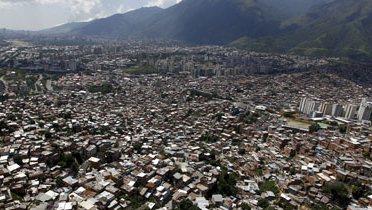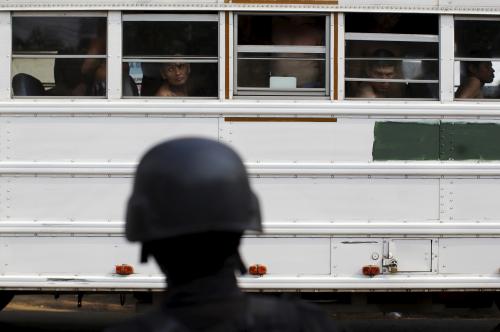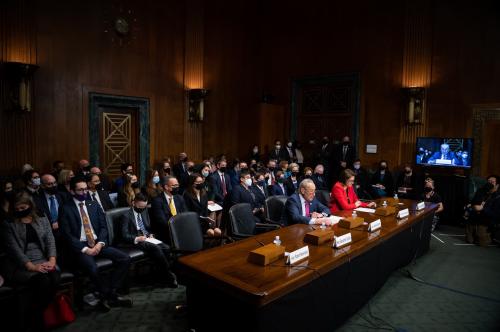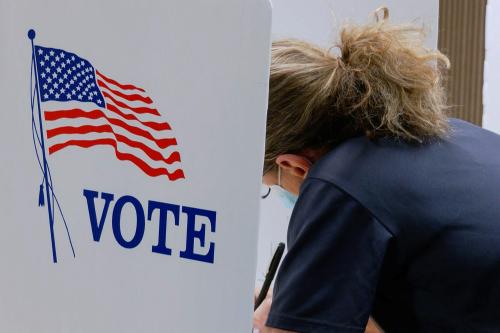Latin America is the most violent region in the world. It has a homicide rate of around 30 per 100,000, something that places like England, Scandinavia, or Italy have not experienced since the 17th, 16th, and 13th centuries, respectively. If we were to use crime as our measure of development instead of GDP, Latin America lags behind developed nations not by 50 years as it is commonly stated, but by around 500 years. The reality is more dramatic than the statistic, and like most social ailments, it weighs disproportionately on the poor.
The recent commodity price slump has ushered in a spending discipline in most Latin American countries, underscoring how important it is to improve the quality of public resource allocation. It is not always easy to identify the best ways of getting the most bang for your buck, so whenever information shedding light on this question becomes available, it makes sense for governments to pay attention. Police departments constitute the most salient crime fighting institutions governments have, and in many countries they absorb the largest share of criminal justice spending. Therefore, finding ways of making the police more effective in light of tight budgets is vitally important.
Traditional police patrols are organized around beats: large geographical areas where policing services are delivered without a predetermined route or coverage protocol. This model shifted in the early 1990s in the U.S. and U.K. and is now being picked up in Latin America. The shift entails reducing police discretion over the use of patrol time, and assigning officers to high crime places and times as a strategy for increasing the deterrent effect of police presence. A body of credible evidence from cities like Minneapolis, Jersey City, Kansas City, Sacramento, London, and more recently Cambridge (U.K.) suggests that targeting police presence at crime hot spots is effective in reducing crime.
Very recently, new evidence on the effectiveness of policing focused on hot spots in Latin America has emerged. In collaboration with a team from Cambridge University led by Lawrence Sherman that deployed a randomized control trial, police in Trinidad undertook a hotspots policing intervention directed at reducing homicide and found significant reductions. More recently, a team from the University of Los Andes in Bogotá, led by Daniel Mejia, and the Development Bank of Latin America partnered with the Colombian National Police and Medellin’s Office of the Mayor to implement and rigorously evaluate a hotspots intervention in that city.
As in most other places where these statistics are available, in Medellin, 50 percent of all homicides occur in approximately 1 percent of the 37,000 street segments (blocks) that comprise it. Based on an index of all crimes, 50 percent of crime is concentrated in only 2.8 percent of street segments. In coordination with the police, the team identified 967 hot spots dispersed throughout the city and randomly selected 384 to receive increased police patrolling beginning on May 4, 2015, for an initial trial period of 6 months. Police patrols were tasked to stay in these segments for a total of 105 minutes for every 24-hour period, divided into seven 15-minute treatments a day. The average officer compliance rate varied across police stations and over time, but was around 87 percent on average for the entire trial period.
One frequent concern with this type of intervention is that they just move criminals “around the corner,” where police presence is less intense, and are therefore unable to reduce overall crime. In addition to treatment and control hot spots, the Medellin experiment tracked crime in streets that are nearby hot spots. The result is that streets between zero and 125 meters away from treated hot spots witnessed a decrease in property crime and, to a lesser extent, assaults. The straight comparison between treated and control hotspots, while also suggestive of a small crime decrease, is not statistically significant.
Research on the displacement question in the U.S. and U.K. has failed to find a significant effect, lending credence to the hypothesis that this type of intervention is capable of reducing aggregate crime—at least in the short term. The literature is also consistent with the preliminary Medellin results. In addition, the findings make theoretical sense, since the very reasons why crime is highly concentrated in micro areas (specific criminal opportunities like school goer traffic, or the location of liquor stores and bars) should also make it hard for crime to move around in the short term.
However, none of the experiments implemented to date have been explicitly designed to address this question until now. In collaboration with colleagues from Los Andes, Columbia University, the University of Chicago and IPA, we are conducting an experimental study in the city of Bogotá designed to directly test the displacement hypothesis. The study will use administrative police report data along with victimization surveys in order to enhance the reliability of crime statistics, as police reports themselves can be affected by increased police presence. Preliminary results are expected in late 2016.
A word of caution is in order. Policing is an occupation that confers great autonomy in decision making to those walking the beats. Police officers must make judgment calls on how stringent or lax law enforcement needs to be: should you fine the jaywalker or let a speeding driver go with a warning? This is first nature to police work, and efforts to micromanage the use of police time are naturally resisted. One of the major challenges in implementing a hot spots patrol intervention is not only setting up the appropriate minute-by-minute monitoring system to measure police compliance with the program, but also finding ways of making it compatible with patrol police incentives and culture. In a previous hot spot study that we implemented in the city of Caracas, despite the quality of our monitoring system, the size of the experiment had to be cut to about a quarter of the original plan since police patrols reportedly “didn’t have time” to police hot spots.
Like in many areas of public policy, the greatest challenges in policing lie in providing the right incentives, nudges, infrastructure, and constraints so that services are actually delivered in the way the policy design intends. Learning which policies work is important, but learning how to actually deliver them is essential.







Commentary
Reducing crime by making better use of police time
August 15, 2016
Latin America is the most violent region in the world. In this blog, Daniel E. Ortega explores new evidence on the effectiveness of policing focused on hot spots in Latin America.